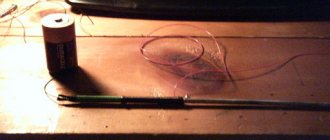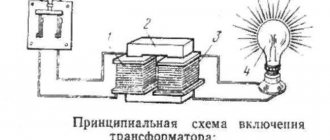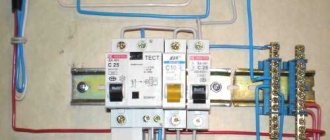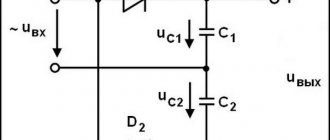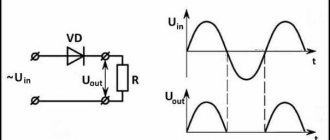There are four fundamental forces of physics, and one of them is called electromagnetism. Conventional magnets have limited use. An electromagnet is a device that creates a magnetic field when an electric current flows. Since electricity can be turned on and off, so can an electromagnet. It can even be weakened or strengthened by decreasing or increasing the current. Electromagnets find their use in a variety of everyday electrical appliances, in various industrial fields, from ordinary switches to spacecraft propulsion systems.
What is an electromagnet?
An electromagnet can be considered as a temporary magnet that functions with the flow of electricity and its polarity can be easily changed by changing the direction of the current. Also, the strength of an electromagnet can be changed by changing the amount of current flowing through it.
The scope of application of electromagnetism is unusually wide. For example, magnetic switches are preferred because they are less susceptible to temperature changes and are able to maintain rated current without nuisance tripping.
Other types of classification
There are other ways to classify electromagnets. For example, they can be distinguished by the field of the electromagnet and its status: variable and/or constant. There are also classifications based on the methods by which the winding is turned on (series and parallel connection), on the performance and its characteristics (capable of working for a long time, intermittent and short-term) and different in the speed of task completion (slow and high-speed).
Electromagnets and their applications
Here are some of the examples where they are used:
- Motors and generators. Thanks to electromagnets, it has become possible to produce electric motors and generators that operate on the principle of electromagnetic induction. This phenomenon was discovered by scientist Michael Faraday. He proved that electric current creates a magnetic field. The generator uses the external force of wind, moving water or steam to rotate a shaft, which causes a set of magnets to move around a coiled wire to create an electric current. Thus, electromagnets convert other types of energy into electrical energy.
- Industrial use practice. Only materials made from iron, nickel, cobalt or their alloys, as well as some natural minerals, react to a magnetic field. Where are electromagnets used? One of the areas of practical application is metal sorting. Since the mentioned elements are used in production, iron-containing alloys are effectively sorted using an electromagnet.
- Where are electromagnets used? They can also be used to lift and move massive objects, such as cars before disposal. They are also used in transportation. Trains in Asia and Europe use electromagnets to transport cars. This helps them move at phenomenal speeds.
History [edit | edit code]
In 1825, English engineer William Sturgeon made the first electromagnet, which was a bent rod of soft iron wound with thick copper wire. To isolate it from the winding, the rod was varnished. When a current was passed, the iron rod acquired the properties of a strong magnet, but when the current was interrupted, it instantly lost them. It is this feature of electromagnets that has made it possible to widely use them in technology [1] [2].
In addition to industrial use, magnets have become widely used in medicine. Back in the late 19th - early 20th centuries, on the pages of the Brockhaus and Efron Encyclopedic Dictionary, Mendelson M.E. wrote that an electromagnet “serves as the best way to remove foreign bodies from the eye cavity” [3].
Electromagnets in everyday life
Electromagnets are often used to store information, as many materials are capable of absorbing a magnetic field, which can then be read to retrieve information. They find application in almost any modern device.
Where are electromagnets used? In everyday life, they are used in a number of household appliances. One of the useful characteristics of an electromagnet is the ability to change its magnetic force by changing the strength and direction of the current flowing through the coils or windings around it. Speakers, loudspeakers and tape recorders are devices that implement this effect. Some electromagnets can be very strong, and their strength can be adjusted.
Where are electromagnets used in life? The simplest examples are doorbells and electromagnetic locks. An electromagnetic lock is used for the door, creating a strong field. As long as current passes through the electromagnet, the door remains closed. Televisions, computers, cars, elevators and photocopiers are where electromagnets are used, to name a few.
Examples of using EM
The following devices can be cited as examples of the use of electromagnets:
- TVs;
- transformers;
- car starting devices.
TVs
Modern homes are usually filled with various electrical appliances. Being near a television receiver, they can influence the television screen (TV) by magnetic induction. TV already has built-in protection against screen magnetization. If multi-colored spots appear on the display field, then turn off the device for 10-20 minutes. Built-in protection will remove magnetization of the screen.
In some cases, this method does not provide the desired help. Then a special electromagnet is used, which is called a choke. This is a kind of induction coil. The device is connected to a household power outlet and passed along and across the screen. As a result, the induced magnetic fields are absorbed by the inductor.
Transformers
The design of transformers is very similar to the structure of electromagnets. Both there and there there are windings and cores. The difference between a transformer and an EM is that the former has a closed magnetic circuit. Therefore, the summed magnetic force is nullified by counter magnetic fluxes.
Car starting device
The car starter works as a starting device for the engine. It turns on while the engine is starting. The temporary transfer of starting force to the engine crankshaft is provided by a retractor electromagnet.
When you turn the key in the ignition switch, the EM pulls the gear into the crankshaft teeth. During contact, the starter motor cranks the engine until a fuel combustion cycle occurs in the engine cylinders. The traction relay then turns off the electromagnet and the starter gear returns to its original position. After which the car can move.
Starter with traction relay
Electromagnets have entered the sphere of human activity so tightly that existence without them is unthinkable. Simple devices can be found everywhere. Knowledge of the principle of their operation will allow the home handyman to cope with minor repairs of household electrical devices.
Electromagnetic forces
The strength of the electromagnetic field can be adjusted by changing the electric current passing through the wires wrapped around the magnet. If the direction of the electric current is reversed, the polarity of the magnetic field also reverses. This effect is used to create fields in a computer's magnetic tape or hard drive for storing information, as well as in speaker speakers in radios, televisions, and stereo systems.
Magnetism and electricity
The dictionary definitions of electricity and magnetism are different, although they are manifestations of the same force. When electric charges move, they create a magnetic field. Its change, in turn, leads to the generation of electric current.
Inventors use electromagnetic forces to create electric motors, generators, MRI machines, levitating toys, consumer electronics and many other invaluable devices without which it is impossible to imagine the daily life of a modern person. Electromagnets are inextricably linked with electricity; they simply cannot work without an external power source.
Application of lifting and large-scale electromagnets
Electric motors and generators are vital in today's world. The motor takes electrical energy and uses a magnet to convert electrical energy into kinetic energy. A generator, on the other hand, converts motion using magnets to generate electricity. When moving large metal objects, lifting electromagnets are used. They are also necessary when sorting scrap metal, to separate cast iron and other ferrous metals from non-ferrous ones.
A real miracle of technology is a Japanese levitating train capable of reaching speeds of up to 320 kilometers per hour. It uses electromagnets to help it float in the air and move incredibly fast. The US Navy is conducting high-tech experiments with a futuristic electromagnetic rail gun. She can direct her projectiles over considerable distances with great speed. The projectiles have enormous kinetic energy, so they can hit targets without the use of explosives.
Where can electromagnets be used in medicine?
Magnetic resonance imaging (MRI) scanners also operate using electromagnets. This is a specialized medical method for examining internal human organs that are not accessible for direct examination. Along with the main one, additional gradient magnets are used.
Where are electromagnets used? They are present in all types of electrical devices, including hard drives, speakers, motors, and generators. Electromagnets are used everywhere and, despite their invisibility, occupy an important place in the life of modern man.
Calculations
Before you start assembling an electromagnet with your own hands, make a preliminary calculation of its parameters. Structural elements are calculated separately for DC and AC EVs.
For DC
Before making calculations, the required value of the magnetomotive force (MF) of the coil is determined. The winding parameters must provide the required MMF, at the same time the coil must not overheat, otherwise the insulating layer of the winding wire will be lost. The initial data for the calculation are the voltage in the wire of the electromagnetic coil and the required value of the magnetomotive force.
Methods for calculating DC electromagnets are constantly published on the Internet. There you can also select formulas for determining the MMF, the cross-section of the core and winding wire, and its length.
Additional Information. Mostly on the Internet they look for calculations of 12 volt electromagnets made by themselves. Depending on your needs, you can take different calculation paths. Basically, “recipes” are chosen to determine the cross-section and length of the winding wire powered by a standard “A” or “AA” format battery.
For AC
The basis for EM AC is the calculation of the winding. As in the previous case, they are guided by the initial requirements for the MMF value. Despite the large number of recommended calculation formulas, most often the “capabilities” of a device are determined by an experienced selection of the parameters of its design parts. Methods for calculating EM alternating current can always be found on the World Wide Web (Internet).

